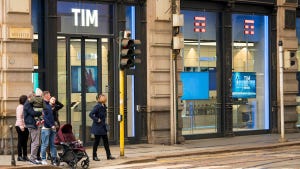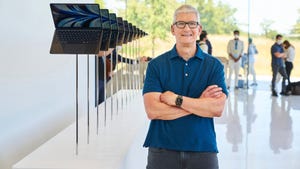Deutsche Telekom: A Software-Defined Operator
We're on the path to being a software-defined operator, says Deutsche Telekom executive as he shares the German giant's SDN/NFV progress.
October 16, 2013

BAD HOMBURG, Germany -- SDN & OpenFlow World Congress -- Deutsche Telekom has started its migration towards becoming a "software-defined operator," a senior executive told attendees here Wednesday morning, noting that all major operators need to follow suit if they're to survive in the long term.
And he not only shared DT's vision of a simplified network but told delegates how the German giant is planning to address the shift to a next-generation OSS, a (if not the) key challenge facing operators planning their SDN/NFV strategies.
"Current networks are not ready for the traffic growth that's coming and competition is getting even tougher… ARPU [average revenue per user] levels are not going to be going up. We have a lot of complexity and it's hard to be fast. We have to invest in our networks" and become more software-oriented, said Axel Clauberg, VP of aggregation, transport, IP, and fixed access networks at Deutsche Telekom AG, "otherwise we will not survive."
Operators such as DT need to move to "dramatically simplified networks" to be able to match the Internet services giants. "The OTT players can move very fast because they are software-oriented," he noted. "We need drastically simplified IP networks, IP/optical integration and an infrastructure cloud model [carrier datacenters]" that hosts all manner of functions, applications and content, noted Clauberg.
That's essentially the TeraStream model first outlined by Clauberg more than a year ago: a simplified IP backbone infrastructure supported by software-defined networking (SDN) and network functions virtualization (NFV) capabilities. DT's vision of virtualized appliances "triggered the formation of the NFV group at ETSI… we needed other operators to move in the same direction," he noted. (See Carriers Peer Into Virtual World and DT Unveils New Network Vision.)
And now there's a much greater emphasis on how DT's OSS needs to evolve to manage and help orchestrate that network. "We have a very fat OSS and a lot of legacy systems" that are very hard to switch off, he noted. But by the end of this decade DT aims to have a network that supports native IPv6 in its IP transport core, has simplified tunneling protocols and a transport protocol (almost certainly Ethernet, which by that time should be achieving 1 Tbit/s), and a "unique OSS approach."
That approach is based on the Yang language, which has been adopted and utilized by one of DT's key vendor partners, Tail-f Systems . (See Deutsche Telekom Selects Tail-F.)
That fits in with the more open technology approach that will underpin and run TeraStream. DT's fundamental decision at the start of this process was that it needed to break away from the proprietary world that telcos have worked in for so long and "build new networks on open standards technology, not proprietary software, so we are using KVM for our hypervisor and are developing orchestration capabilities around OpenStack, which isn't perfect yet of course."
For Clauberg, the ultimate goal is that the next-generation network will become less of a burden and free up DT to "focus on services, to be programming services, instead of re-architecting the network and the OSS."
And DT isn't just talking the talk: It has been testing out its TeraStream model at Hrvatski Telekom, its regional operator in Croatia. But while it's possible to start building a new age network with multi-vendor packet/optical capabilities -- Clauberg said Alcatel-Lucent and Cisco Systems Inc. have been proving themselves in Croatia -- there's only so far DT can try out its vision currently, as "there is no carrier-grade SDN today… but we're working on it," noted the DT man. (See DT's All-Cisco, No-Optical Network and DT's Croatia Unit Taps Cisco.)
And it's a big challenge for all involved. Clauberg noted that DT needs to build a team that comprises IP, datacenter, programming, and operations specialists that can work in small, empowered, and agile teams, while both the carriers and vendors need to adjust for the migration from hardware-based to software-based business models. In addition, the vendors need to be able to deliver in terms of scalability, flexibility, automation, energy efficiency, cost optimization, and, critically, security. "We need carrier-grade security mapped to a modern virtualized environment and on that there are no compromises," noted the DT man.
It's an approach that's inspiring others, notes Heavy Reading chief analyst Graham Finnie. "DT is determined to take a leadership position and it's showing what can be done and what still needs to be developed. Clauberg's presentation was very positive about the potential of SDN and NFV but it was also a reminder that there is no alternative for the operators."
It also set the bar for how vendors, particularly in the OSS community, need to respond. "This is a major challenge for the existing OSS players -- they need to deliver real-time streamlined OSS tools," adds Finnie. (See ESDN: OSS Implosion and SDN & NFV to Shake Up Operator OSS Market, Heavy Reading Finds.)
— Ray Le Maistre, Editor-in-Chief, Light Reading
You May Also Like










